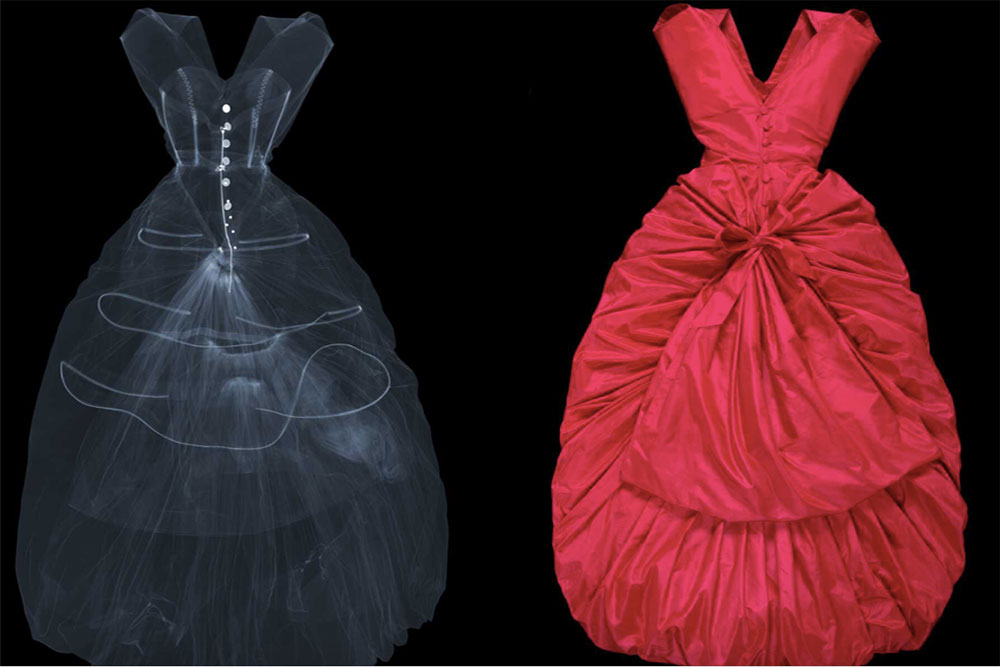
For its Balenciaga exhibit, the Victoria and Albert Museum actually X-rayed this balloon-hemmed gown from 1954, showing how the underlying “armature” gave the silk-taffeta garment its buoyant silhouette. All the rest is draping by the hand of the master. / Photos © Victoria and Albert Museum, London. X-ray by Nick Veasey, 2016. © Nick Veasey.
TODAY’S HOUSE OF BALENCIAGA is a triumph of reinvention, with $1,290 high-heeled knit Toe sneakers, aggressively tailored ready-to-wear and a $350 Happy Rat stud earring. All of this might baffle Cristóbal Balenciaga, the Spanish couturier who founded the house in Paris in 1937. But then, so might today’s fashion biz in general, with its hyper-branding and insistence on meeting the street but at a price.
To be sure, Balenciaga made his own kind of splash, dazzling the public and fellow fashion designers of the 1940s and ’50s not only with his design ideas but with his tailoring and construction: He had the pattern-making skills to execute silhouettes that seemed to flout the laws of gravity, and the ability to embrace the female form by sometimes hiding it.
This distilled and rather more rarefied approach to fashion is shared in an online exhibition by the Victoria and Albert Museum in London, renowned of course as the world’s largest museum of applied and decorative arts and design. The exhibit shows items of clothing and famous fashion photographs of Balenciaga’s designs, plus videos and even X-rays.
Balenciaga’s “golden age” is said to have been the 1950s and ’60s, when he gave birth to revolutionary silhouettes such as the tunic and the sack, baby doll and shift dresses, all of which remain style staples.
The “Tulip” dress shown below is also featured in black-and-white photos from its couture debut and in a video showing the pattern and construction that went into the famous confection.
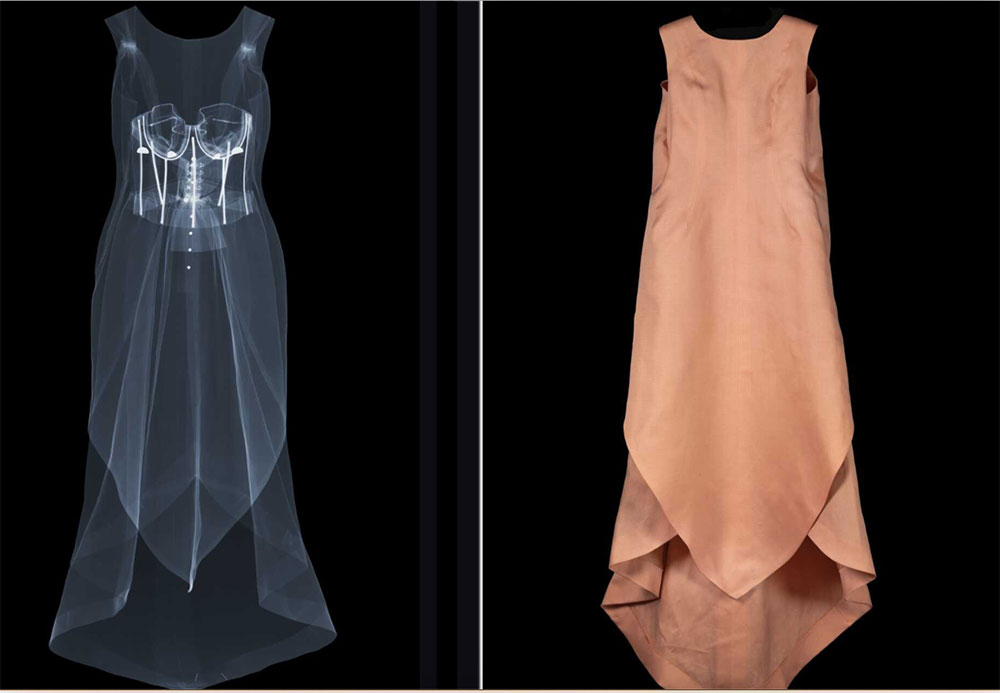
Balenciaga’s “Tulip” dress, made for the actress Ava Gardner in 1965, got the full treatment, from the couturier and from the V&A. Here we see the gown and its X-ray, which gives lie to the myth that Balenciaga did not use corseting and stays in his garments. / Photo © Victoria and Albert Museum, London. X-ray by Nick Veasey, 2016. © Nick Veasey.
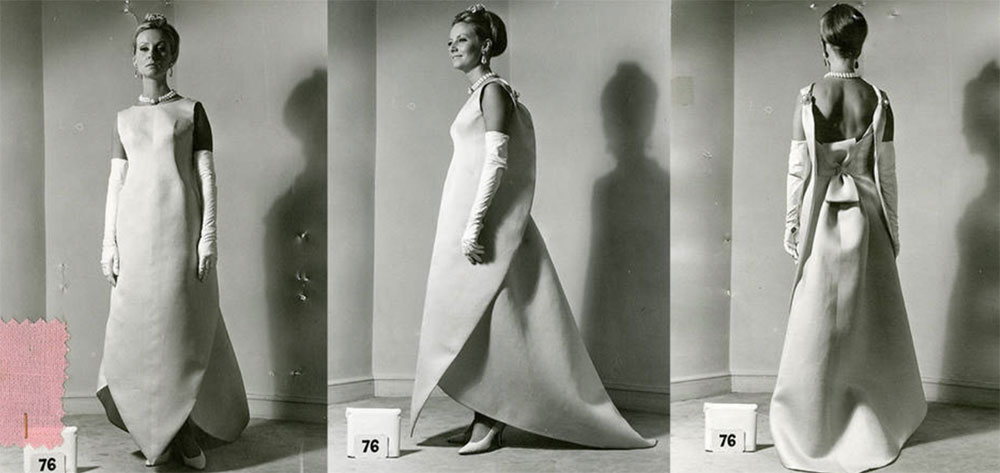
A model wears the Balenciaga evening dress from 1965 that was dubbed the “tulip” by the press. / Photo © Balenciaga House Archives, Paris. From the Victoria and Albert Museum online exhibit.
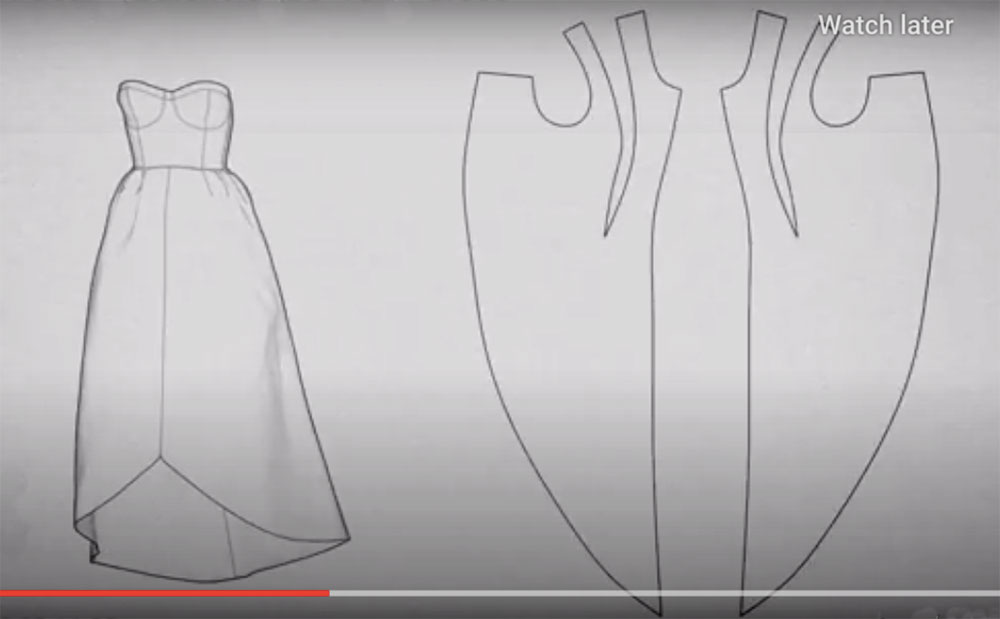
All garments, even the simplest, are constructed of several pieces of fabric. These two images, above and below, are from a video that is part of the Victoria and Albert Museum online Balenciaga exhibit. Needless to say, the pattern pieces for this gown are far from ordinary. / From the Victoria and Albert Museum, London.
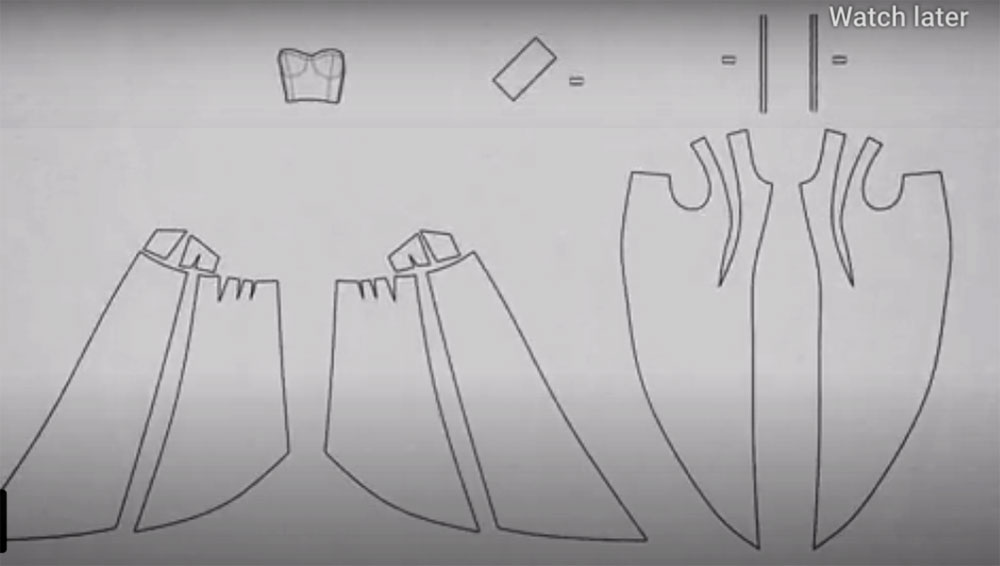
More pattern pieces from the “Tulip” dress by Cristobal Balenciaga, as seen in the Victoria and Albert Museum exhibit on the designer.
Balenciaga’s era was one in which women wore hats (men too, for that matter). Like his garments, Balenciaga’s hats were marvels of construction, almost architectural in nature.

In this Richard Avedon fashion image, the fabled model Dovima and dog Sacha display complementary silhouettes while sitting at the Cafe des Deux Magots in Paris. Balenciaga was famous for the wide, shallow saucer-type cloche; he designed this one in 1955, to be worn with a slim, tailored skirt suit. / © The Richard Avedon Foundation. From the Victoria and Albert Museum exhibition.

This helical “spiral” hat, says the Victoria and Albert Museum’s exhibit, demonstrates how Balenciaga liked to strip things down to simple shapes and simple colors. The simplicity could be just an illusion, though: This hat had to be secured underneath by three combs attached to the wearer’s hair. / © Victoria and Albert Museum, London.
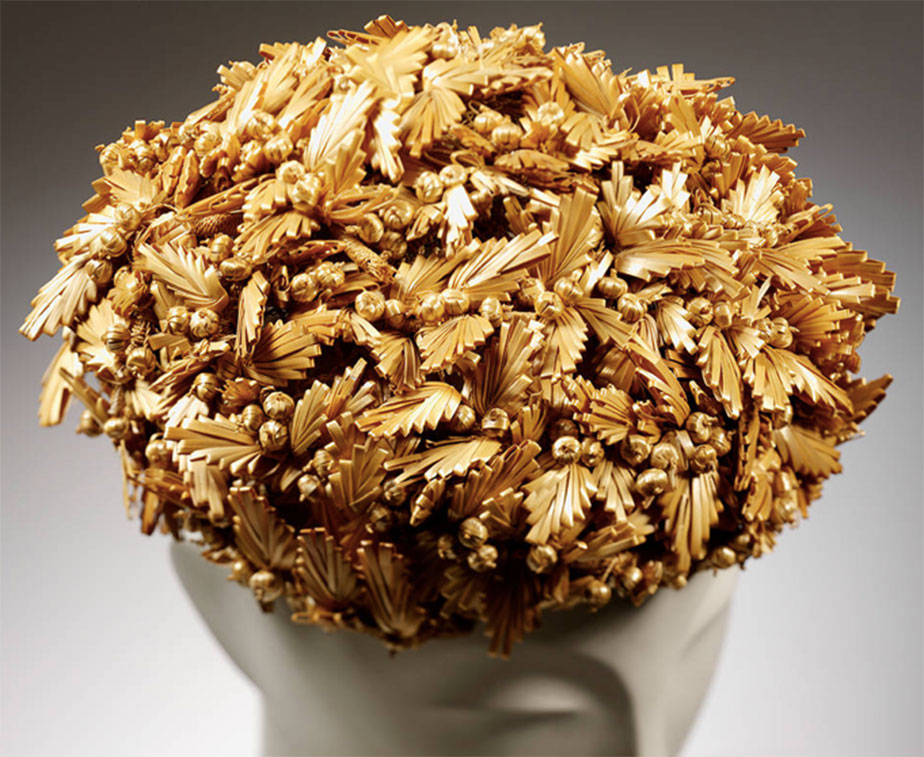
Simplicity? This beret-shaped hat from 1950 seems the antithesis, made of glossy golden straw, mounted onto a wire base and finished with leaves and berries. / © Victoria and Albert Museum, London.
—Nancy McKeon

So interesting! He was actually an architect-turned-fashion designer.
Ahhh, I didn’t know that. I’ve seen him referred to as an “architect of fabric,” but I didn’t know about any architectural training. The history I’ve read said he was apprenticed as a boy to a tailor, then started sewing. But maybe what I read was streamlined. Interesting.